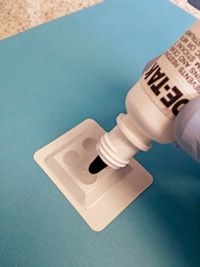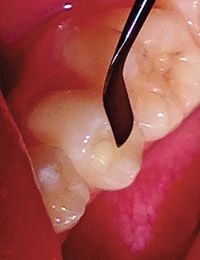How to eliminate the tackiness between dental instruments and filled composite resin
Have you ever been annoyed by composite sticking to everything but your cavity prep? You wipe off so much that you realize the wasted resin could have filled another preparation? You might even resort to wetting the instrument with adhesive material to prevent the problem or opt for a “non-stick” hand instrument or carver to solve the problem.
Have you ever been annoyed by composite sticking to everything but your cavity prep? You wipe off so much that you realize the wasted resin could have filled another preparation? You might even resort to wetting the instrument with adhesive material to prevent the problem or opt for a “non-stick” hand instrument or carver to solve the problem.
I have been there, and I am sure you have too, but these tactics never seem to work as well as we would like, especially when it comes to achieving our desired shape when sculpting. So is there a cost-effective material that could provide a good result, save chairtime and prevent the composite material from sticking? I’d like to share a small pearl I found that should be in every office. It’s called De-Tak™, made by TAUB Products.
How it works
Place the De-Tak material in a well or dapping dish and wet your hand instrument before packing or contouring. The material will not interfere with the setting and will not affect the chemical or physical properties of the resin. I really find this product is a go-to for all my composite fillings and can be used with any brand. I especially like it with SonicFill (Kerr Corp.), as the materials seem to work together seamlessly when contouring the restoration before curing.
More from Taub: Taub launches Zero-G implant cement
Contouring becomes a very fast process with beautiful outcomes and proper anatomy. As a result, the time you spend on occlusal adjustments is minimized and your chair time reduced significantly. De-Tak also helps the instrument provide a smoother surface during placement and contouring. After the resin has finished curing, the polishing phase is effortless, and the results of using De-Tak are apparent, as it adds a high-gloss effect to your restoration.
Economical as well
So how much is it? A 15cc bottle of De-Tak goes a long way for a small cost. At the time of this writing, this little silver bullet runs $28. A drop or two of De-Tak can supply a quadrant of direct resin restorations.
So I suggest you give it a try! I think you will find that sticky problems become a thing of the past and your procedures go faster without compromising the quality you demand for your patients. Time is money and, in the end, I think you will agree De-Tak pays for itself by eliminating the extra time and frustration that come with sticky composites.
The product does all this while delivering the great esthetic results you require.
More techniques: How to use Estelite Sigma Quick for mono-layered techniques
Continue to Page 2 to read more ...
Instructions

Place the De-Tak material in a well or dapping dish and wet the surfaces of your hand instrument. Remove any excess De-Tak material. Now you’re ready to proceed. Re-coat the instrument as needed. With De-Tak, your instrument will glide over the resin surface producing a smoothly contoured area. It is an easy-to-use, simple and time-saving product that should become a routine and necessary procedure in your office.

Resins can be built up on surfaces that have been contoured with a De-Tak coated instrument. De-Tak can be used with any brand of restorative resin. Note: It is suggested that De-Tak not be used during the “mixing” of paste-paste composites, during placement of unfilled or partially filled flowable resins or bonding agents, as a substitute for the resin bonding agent, or to dilute the viscosity of a resin.
More from Dr. Wickenhauser: How to use OptiBond XTR as a universal bonding solution

Using De-Tak helps clinicians save time and more importantly, helps deliver great esthetic outcomes.
Conclusion
And all this while delivering the great esthetic results you require. So there it is, a small pearl in the big picture of what we do, but the power of small brings the little things that make all the difference.

About the author
Dr. Wickenhauser has been practicing dentistry for more than 14 years, emphasizing his focus as a researcher, lecturer, and entrepreneur in the dental profession. He holds eight worldwide patents and is a keynote speaker for the KavoKerr Group. Dr. Wickenhauser has a private practice in the St. Louis area. He can reached by email at wickdental@hotmail.com.
E-book: How to make your practice more efficient with Class II restorations
ACTIVA BioACTIVE Bulk Flow Marks Pulpdent’s First Major Product Release in 4 Years
December 12th 2024Next-generation bulk-fill dental restorative raises the standard of care for bulk-fill procedures by providing natural remineralization support, while also overcoming current bulk-fill limitations.